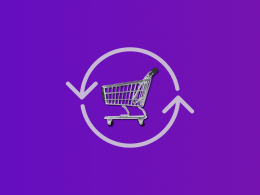In the world of business, profit is the ultimate goal. Every company aims to maximize their earnings and stay ahead of the competition. However, achieving this goal requires a deep understanding of various financial concepts, including marginal revenue.
Marginal revenue is the additional revenue generated from selling one more unit of a product or service. It plays a crucial role in determining the profitability of a business and making informed pricing decisions.
Understanding marginal revenue can help businesses identify the optimal price point, adjust their production levels, and ultimately increase their profit margins.
In this article, we will delve deeper into the concept of marginal revenue, explore the factors that affect this metric, and why it is important to keep track of.
What is marginal revenue and how to calculate it?
Marginal revenue is the additional revenue generated from selling one more unit of a product or service. It is the difference between the revenue generated by selling the last unit and the revenue generated by selling the second-to-last unit. In other words, it is the change in total revenue that results from selling one additional unit.
Calculating marginal revenue is easy – all you need to do is divide the change in revenue by the change in quantity.
Marginal revenue vs. total revenue
Total revenue is the total amount of money generated by selling a specific quantity of a product or service. Marginal revenue, on the other hand, is the additional revenue generated by selling one more unit of a product or service.
Total revenue and marginal revenue are closely related, but they serve different purposes. Total revenue helps businesses understand the overall revenue generated by selling a specific quantity of a product or service. Marginal revenue, on the other hand, helps businesses understand the revenue generated by selling one additional unit of a product or service.
Want to know more about major e-commerce KPIs? Read our expert articles on COGS, AOV, time between purchases and new vs. returning customers, and identify new opportunities to grow your business?
The relationship between marginal revenue and elasticity of demand
To understand marginal revenue, you need to understand the concept of elasticity of demand. Elasticity of demand refers to the responsiveness of the quantity demanded of a product or service to changes in its price. When the price of a product or service increases, the quantity demanded decreases, and vice versa. This relationship between price and quantity demanded is known as the law of demand.
The degree of responsiveness of quantity demanded to changes in price is known as elasticity. If the quantity demanded changes significantly with a small change in price, the demand is said to be elastic. On the other hand, if the quantity demanded changes only slightly with a large change in price, the demand is said to be inelastic.
Marginal revenue is closely related to elasticity of demand. When the demand for a product or service is elastic, a decrease in price will result in an increase in the quantity demanded, which in turn will increase the total revenue. When the demand is inelastic, a decrease in price will result in a decrease in the total revenue.
So, in order to maximize profit, businesses need to understand the elasticity of demand for their products or services. By doing so, they can adjust their prices to maximize their total revenue and ultimately their profit.
Factors that affect marginal revenue
Several factors can affect marginal revenue. These include changes in price, changes in production levels, changes in consumer preferences, and changes in competition.
Changes in price can have a significant impact on marginal revenue. As we discussed earlier, when the demand is elastic, a decrease in price will result in an increase in the quantity demanded, which in turn will increase the total revenue. When the demand is inelastic, a decrease in price will result in a decrease in the total revenue.
Changes in production levels can affect marginal revenue as well. If the cost of producing each unit decreases as production levels increase, the marginal revenue will increase. On the other hand, if the cost of producing each unit increases as production levels increase, the marginal revenue will decrease.
Just like changes in price and production levels, changes in consumer preferences also have a direct effect on marginal revenue. If consumers start to prefer a substitute product or service, the demand for the original product or service will decrease, resulting in a decrease in marginal revenue.
Last, but not least, there’s clearly an impact from changes in competition. If a new competitor enters the market and offers a similar product or service at a lower price, the demand for the original product or service will decrease, resulting in a decrease in marginal revenue.
Common misconceptions about marginal revenue
There are several misconceptions about marginal revenue that businesses should be aware of.
One common misconception is that marginal revenue is equal to the price of the product or service. This is not true. Marginal revenue is the additional revenue generated by selling one more unit of a product or service, and it is calculated by dividing the change in total revenue by the change in the number of units sold.
Another misconception is that marginal revenue is always positive. This is not true either. The marginal revenue can be negative if the demand for the product or service is low.
Why is marginal revenue important in business?
Marginal revenue plays a crucial role in determining the profitability of a business. By understanding the marginal revenue, businesses can identify the optimal price point for their products or services. They can also adjust their production levels to maximize their profits. Marginal revenue helps businesses make informed pricing decisions and avoid underpricing or overpricing their products or services.
Leveraging marginal revenue to maximize profits
To better understand how marginal revenue works in practice, let’s take a look at some examples.
One example is the airline industry, where airlines use marginal revenue to determine the optimal price point for their flights, using tools like Google Flights. By adjusting their prices based on demand and the price elasticity of demand, airlines can maximize their profits.
In the smartphone industry, companies use marginal revenue to determine the optimal quantity of phones to produce. By analyzing the marginal revenue curve, companies can identify the point at which profits are maximized and adjust their production levels accordingly.
Marketplaces use marginal revenue as well. For instance, Amazon uses dynamic pricing to adjust the prices of its products based on the demand. The company uses algorithms to calculate the marginal revenue at different price points and determines the optimal price point for each product.
How to take control of your revenue
Now that you understand the importance of keeping track of your revenue, you might be wondering what the best way to do this is. Of course, you can do it manually, but do you have enough time? Can you allocate the necessary resources? If the answer is no, you might want to consider using automated analytics tools
Synder Business Insights is an all-in-one source of truth for your e-commerce business that will help you take control of your business performance. The software seamlessly connects the sales channels and payment platforms you have in use, consolidates the data in one place and provides you with actionable KPI reports presented on a single dashboard.
The reports cover your sales, and customer and product performance. For example, you can customize your gross sales report to see the breakdown of your revenue by channel in a particular time period, find out what your top-performing products are, and tweak your marketing strategies to cater to the demand.
Conclusion: The importance of understanding marginal revenue for business success
In conclusion, understanding marginal revenue is crucial for business success. Marginal revenue helps businesses identify the optimal price point for their products or services, adjust their production levels, and make informed pricing decisions. By leveraging marginal revenue, businesses can maximize their profits and stay ahead of the competition. Therefore, it is essential for businesses to have a deep understanding of marginal revenue and its significance in business.
While you can keep track of your revenue streams manually, or use several tools to know some of the metrics, you might want to streamline the way you do it with automated analytics software. Shedding light on some of the most important metrics, Synder Business Insights provides businesses with real-time analytics to help them gain control of their numbers. Give Synder a try by signing up for our 15-day free trial, or book office hours with our specialist to discover the perks of automated analytics for your business. Optimize the way you spend your time and unlock the full potential of your e-commerce business!







